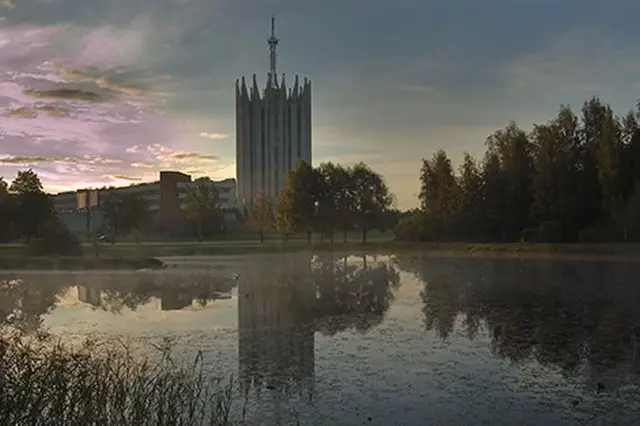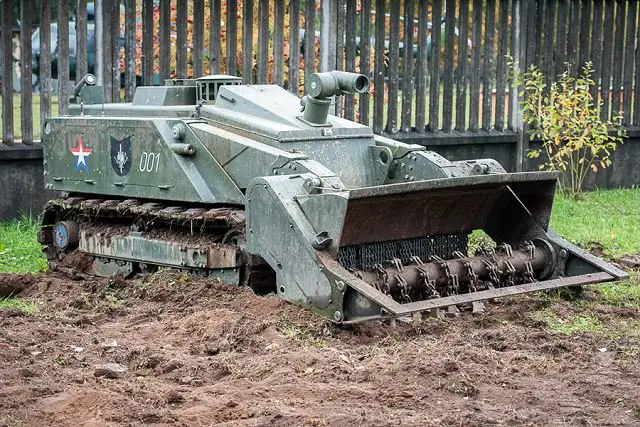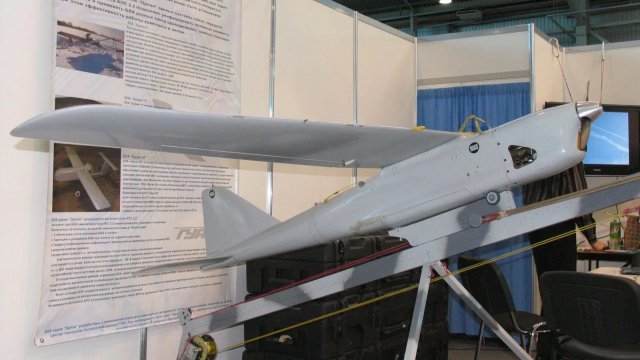Russia to develop further robotics amid foreign advanced military robots 32402161
|
|
|||
|
Armies in the world - Russian Army
|
|||
|
|
|||
| Russia to develop further robotics amid foreign advanced military robots | |||
|
The Russian Defense Ministry’s attitude to robotics development has changed drastically. While different departments previously dealt with the robotics, lacking coordination and a clear-cut plan, the ministry has set up the Main Robotics Research and Test Center (MRRTC) recently under a governmental resolution dated February 15, 2014.
|
|||
|
|
|||
 Russian Robotics Research and Test Center Russian Robotics Research and Test Center |
|||
|
|
|||
|
The move was caused by the fact that foreign militaries have staked on advanced weaponry, including military robots used in former Yugoslavia, Iraq, Afghanistan, Libya and Syria. Unmanned aircraft have been used in all present-day armed conflicts. This prompts the Russian Armed Forces to strengthen their combat capacity through developing radically advanced materiel. A promising line of development is automation based on military robotic technologies. MRRTC’s basic scope is applied research and testing in support of military robotics development, i.e. the Defense Ministry has appointed the center lead researcher in this field. The practical need for furnishing the military with robots stems from the foreseeable nature of future wars and armed conflicts, with due account for missions characterized by such basic traits as high degree of risk to life and limb, considerable difficulty and high responsibility for the outcome. In other words, robots minimize casualties and maximize mission accomplishment. To date, the center has come up with a military robotic system employment concept; devised the 2025 Advanced Military Robotics Development Program; had a Defense Ministry robotics development committee working on the problem; been developing governmental military standards setting out common requirements to military robots and manuals; launched efforts to appropriately equip proving grounds and test centers, and has been training advanced military robotics specialists both in the Defense Ministry’s and defense industry’s education and training institutions. The robotization of the Armed Forces is part and parcel of the overall efforts to radically improve the combat and special gear in line with the call of the times. The line of work is regarded as important for refining and updating the tactics, techniques and procedures and technical and logistic support, including medical support. The Armed Forces robotization means a number of mutually agreed organizational and military-technical measures designed to explore unmanned or highly-automated military technologies making troops fully or partially redundant on combat and other dangerous missions. One of the primary purposes of robotization is to reduce combat losses, injuries and occupational deceases of service members. Other purposes include adding new qualities to in-service and in-development combat hardware, expanding the functional capabilities of troops, reducing the impact of the human factor on the outcome of battles through automation of the crucial, labor-intensive and dangerous operations. Owing to the defense procurement program and governmental armament acquisition program, it is possible now to develop and actively use a wide array of ground, naval and aerial military robots. |
|||
|
|
|||
 Uran-6 MRTK-R unmanned multifunctional demining system robot Uran-6 MRTK-R unmanned multifunctional demining system robot |
|||
|
|
|||
|
Since 2011, the number of unmanned aerial vehicles (UAV) alone in the inventory of the Armed Forces has grown by nine times, with the number of ground and naval robots trebling and quadrupling respectively. The successful use of robots is exemplified by the employment of UAVs in the Russian Aerospace Force’s counterterrorist operation in the Syrian Arab Republic. UAVs have been used heavily on reconnaissance missions against militants there. Ground robots have been employed to clear landmines in the North Caucasus. At the current stage of technical development, the Russian Army’s combat engineers use the latest robotic systems, for instance, the Uran-6 designed for lifting antipersonnel mines, improvised explosive devices and unexploded ordnance and the Uran-14 intended for firefighting. The two robotic systems were used as part of strategic command-post Exercise Tsentr 2015 (Center 2015) to practice demining at the Donguz and Ashuluk training ranges. Once the operational evaluation of the demining and firefighting robots has been completed, they will be fielded with all combat engineer large units and training centers. Research, development and testing of new-generation robotics are in progress now, with some of them to be fielded as soon as this year. Thus, military robots are designed, first and foremost, for combat, combat support and combat service support when using manned assets is impossible or inexpedient. The high degree of automation and the introduction of artificial intelligence technologies allow drastically innovative characteristics unachievable to manned systems, the minimization of casualties and removal of the associated limits on the tactics of the general-purpose forces. A military robot is a sum of functionally related elements. In particular, it is a basic platform in the form of a chassis in any configuration designed for operating in various environments, specialized detachable or integral mission equipment in the form of a set of detachable payload modules, and the support and maintenance equipment used for preparing the robot for and controlling it on an operation. The composition of the mission equipment is based on the purpose of the robot. The mission equipment may include reconnaissance hardware, navigation aids, special support equipment, communications gear, specialist computers with relevant software packages, electronic warfare materiel and protective aids. In addition, any robot requires support and maintenance. Hence, there is the need of a control, monitoring and information processing facility, delivery/launch means, rigging, fueling or charging equipment, an operator training facility, manuals and a set of spares, tools and accessories. The in-service robots were exhibited during the robotics conference hosted by the Russian Defense Ministry at the Patriot Park in the Moscow Region on February 10, 2016. Some of the robotic systems, for which development their designers are paying out of pocket, were unveiled too. The Eleron and Orlan-10 UAVs were exhibited along with the aforesaid Uran-6 and Uran-14. Of the dozens of models developed by defense contractors on their own initiative, mention should be made of the MARS A-800 mobile self-contained high-mobility infantry escort robotic system. The displays also included advanced UAVs, including ultra-lightweight ones for use on the tactical level and high-mobility robotic platforms. Many had unique characteristics. |
|||
|
|
|||
 Russian Orlan-10 aerial reconnaissance drone Russian Orlan-10 aerial reconnaissance drone |
|||
|
|
|||
|
In all, over 150 examples and technologies were on display, with more than 950 participants attending the event. The number of visitors exceeded the expectations almost twofold. The conference was conceived as a specialist robotization discussion venue and became the first large-scale event of the kind, which brought together in a single room the leaders of the Defense Ministry and other uniformed agencies, members of the Military Industrial Commission under the aegis of the Russian government, scientists and defense contractors. As to problems, the systemic approach to the robotization of the Armed Forces will harmonize defense industry’s capabilities and the Defense Ministry’s requirements to military robotics. The issue is being addressed with success. The implementation of the Robotization 2025 integrated program approved by the defense minister in October 2014 is in under way. It is contributing to the effective coordination of the research in this field. At the current stage, integrated large-scale research into the role to be played by robots in the future inventory of the Russian Armed Forces is of special importance. It is important to devise promising tactics and composition for future robotized units. Business trips of MRRTC teams to defense contractors to select proposals and implement programs will take place on planned regular basis. A list of manufacturers specializing in military robot development is being drawn up to this end. As for review and expert examination of programs proposed by defense contractors, MRRTC has established a scientific and technical board of authorities on military robotics, including 15 holders of Ph.D. diplomas and 18 holders of M.S. ones. The center’s scope is rather large now. Priority has been given to devising a scientific and methodological mechanism to substantiate missions making sense to use robots. There is the need for working out a multipurpose integrated system of modelling and computer-assisted developing military robotic systems, for devising a methodological mechanism to substantiate an efficient mix and number of robots, and crafting a robot life cycle management concept, particularly, an integrated logistic support-based system of operation. A separate important issue is to develop a military robot specialist education and training system. To execute these tasks, the Main Robotics Research and Test Center has top-notch scientific capabilities of its uniformed and civilian personnel. |
|||
|
|
|||
|
© Copyright 2016 TASS. All rights reserved. This material may not be published, broadcast, rewritten or redistributed.
|
|||


























